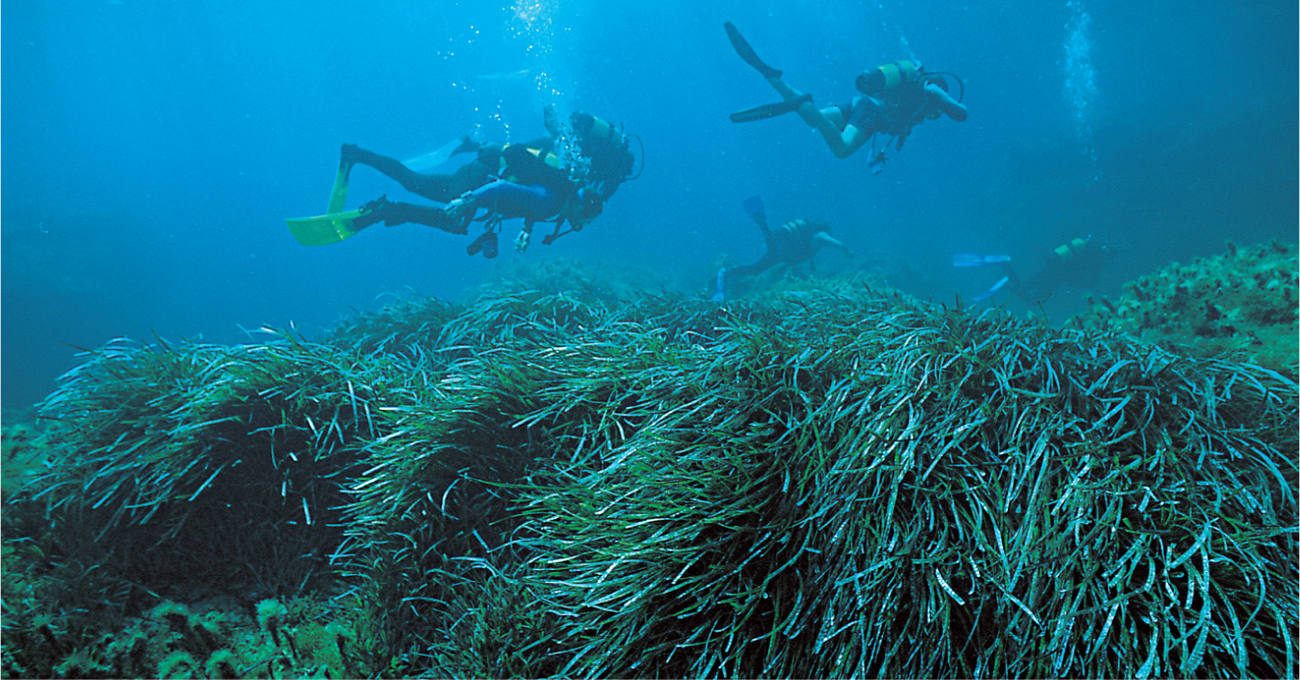
SEAGRASSES
Seagrasses are the only flowering plants in the sea and there are three representatives to be found in the Mediterranean. The flowers are tiny and obscure, appearing in the spring and early summer. Seagrasses anchor the seabed and spread by their root-like rhizomes.
CYMODOCEA
Cymodocea nodosa

Less common than Posidonia, the leaves of Cymodocea are grey-green in colour, reach only 50cm (1ft 8in) and have lacy edges, joined in tufts at the base and which grow from a thin rhizome. These plants prefer warm, calm waters and a fine surface sediment, and when in flower, they appear at the tip of the stem, but are rarely seen.
HALOPHILA
Halophila stipulacea

This is a Lessepsian migrant from the Red Sea and colonies have reached as far west as the islands of Malta, Gozo and Sicily. It has a rounded top to the 4cm (1½in) long, green blade and patches spread by a common root system with each new plant forming around four to six leaves. Other than its invasive nature into other areas of the Mediterranean, indications are that it does not compete with other Mediterranean seagrasses. But ultimately, all migrants are competitive and studies are still underway.
NEPTUNE GRASS
Posidonia oceanica

By far the largest concentration of seagrass found around the Mediterranean shoreline is Posidonia. Growing on sand and detrital bottoms, huge meadows can be found in localized areas and the species is an indicator of clear, clean water. Growing very densely, the leaves are up to 1m (3ft 3in) long and are an important habitat for all manner of marine life. The detritus from Posidonia is often washed up on wind-swept beaches where the algal debris collects and forms small seagrass balls.